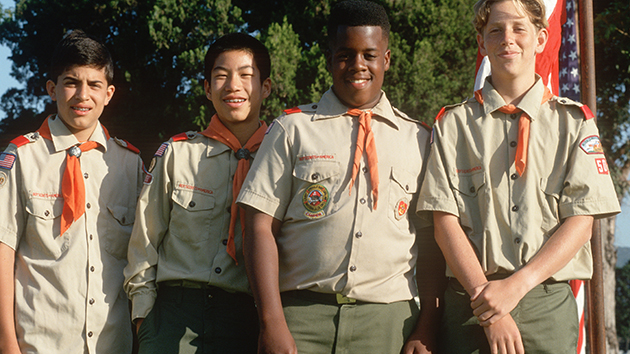
Boy Scouts and their families deliver 1.4 million signatures protesting the ban on gay Scouts and scoutmasters in 2013. GLAAD
The Boy Scouts of America voted today to scrap a blanket ban on gay leaders, marking the end of a policy as old as the group itself. The change will also bar discrimination based on sexual orientation in all Boy Scouts of America official facilities and paying jobs.
Robert Gates, president of the Boy Scouts of America (and former US defense secretary), called for an end to the ban in May, saying the organization should “deal with the world as it is, not as we might wish it to be.”
The end of the ban does not, however, mark complete acceptance of gay leaders: Some scout groups, particularly those with close religious affiliations, will be able to limit leadership positions to heterosexuals.
Here are some stories that demarcate turning points in the controversy:
- An alternative group called the Navigators gained traction with families fed up with BSA policies against gay scouts, atheists, and families who wanted their daughters and sons to be in the same scouting troop. Navigators USA publicized itself as an organization that “welcomes all people…no matter what gender, race, lifestyle, ability, religious or lack of religious belief.”
- This timeline shows just how long anti-gay discrimination has been going on in the BSA.
- In 2013, the BSA ended its ban on kids in the program who identify as gay, but kept its ban on adults—meaning, in effect, that once a scout turned 18, he could be kicked out.
- The Boy Scouts council threatened to kick out a Maryland pack for posting an inclusive statement on its website promising not to discriminate against gay scouts.
- BSA funders such as UPS, United Way, the Merck Company Foundation, and the Intel Foundation fled for the hills as a direct result of the Boy Scouts’ anti-gay policies.
















